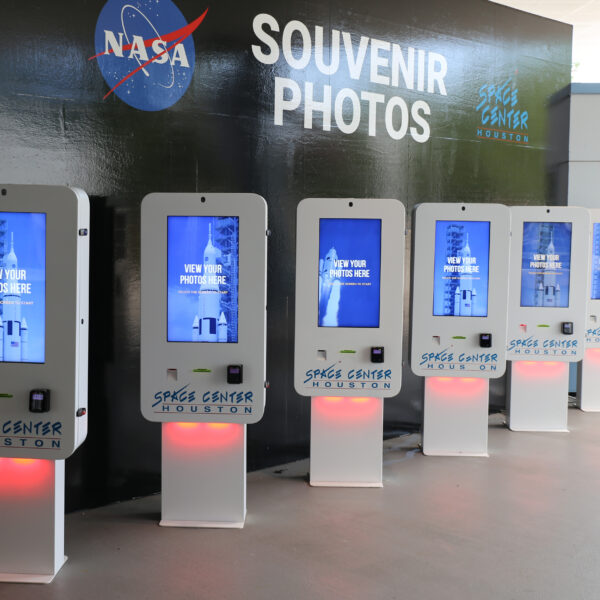
Kiosks
Close
Kiosk Industries


Kiosk document and ID scanners come in all shapes and sizes and are primarily selected depending on the type of media, image, or information being scanned. This is because different scanning technology is better at capturing certain documents and information than others.
Many kiosks that require document scanning technology are meant to read forms of identification or full-scale documents, specifically ID-3s, A4s, and ID-1/CR80s.
With so many options available, it’s easy to become overwhelmed when trying to choose the right option for your kiosk program’s needs. Below, we detail the common types of media and documents along with the best kiosk document scanners for each.
A4 documents refer to the standard page size of 8.5” x 11,” including letters, forms, deeds, and more. These full-sheet papers are scanned by using either flatbed or pass-through electronic scanners.
Traditional flatbed scanners have a large glass surface with an optical lens and light that captures a digital photo or image. Flatbeds allow for single-sided scans of documents and images. This means the scanner can only read one side of the paper at a time.
A pass-through scanner is similar to a flatbed scanner, but instead of the optical lens and light moving across the document, the lens is fixed in one spot and the document is dragged past the lens. Many pass-through scanners are also capable of double-sided scanning, in which both sides of the paper can be read by the scanner at once. Pass through scanners are great for kiosk integration because their footprint is much smaller than a flatbed scanner, making them easier to mount in a kiosk.
However, the need to scan A4 documents in their entirety can sometimes be sidestepped by using barcodes. Barcodes can be read by using infrared technology, in which optical devices use infrared light to read 1-D or 2-D symbology.
Infrared technology can also be used on A4 documents through electronic scanners with Optical Character Recognition (OCR). OCR is the actual process of converting the scanned document into text. Instead of simply obtaining the digital image of the physical document, it recognizes and analyzes the information being processed.
OCR is particularly useful with these documents, since this technology can identify even handwritten characters, allowing for more efficient processing of manually filled-out paperwork.
An ID-3 document simply refers to a passport booklet. Kiosks meant to read these documents are often found in international travel hubs, such as airports or train stations.
This form of ID is typically scanned with a small footprint flatbed scanner. The booklet is opened and laid face-down on a clear glass surface with various optical and light devices mounted beneath it.
Due to its sensitive nature, information contained in ID-3s require increased security measures, meaning additional technology is often required to read this information. This can include the ability to sense and read characters, 2-D barcodes, and RFID signals.
RFID, or Radio-Frequency Identification, uses contactless scanning of electronic transmitters as a means of sharing stored information.
This is done by embedding a chip withing the booklet that the RFID reader can process when the document is scanned. The chip allows the reader to access the encrypted information stored within. A common form of RFID technology is Near Field Communication (NFC), which has a shorter range than other RFID technology, making it more secure.
ID-1/CR80 documents primarily refer to identification cards, such as driver’s licenses, credit cards, membership cards, insurance cards, rewards cards, work and school IDs, hotel keys, and more. They measure 3.375” x 2.125” and are usually made of plastic, paper, or lamination.
These documents oftentimes have additional embedded features, allowing them to store information in a variety of ways, including barcodes, RFID, magnetic strips, and chip technology. This means that there are quite a few scanner options to choose from, depending on what technology is used by the scanned document.
Once the main payment method for credit cards, magnetic strip readers require the user to swipe the strip across the magnetic head where the coded information is then collected. This method is user-friendly as well as budget friendly. Because it has been around for a while, it is a widely used option.
Over time, chip dips have become a more popular payment method due to the increased security of using information encryption. A chip dip is a device into which an A-1, CR80 card is inserted and the embedded chip is read.
The technology the document is supplied with, whether barcode, RFID, magnetic strip, or chip, will determine the type of scanner necessary for the kiosk.
The choice of a kiosk document scanner is largely dependent on the type of record being scanned or read, which then informs the ways in which the document may be storing data, and thus the technology that is going to work best to obtain that information.
Understanding the differences between A4, ID-3, and ID-1/CR80 documents and the ways in which they store and transmit the information they contain is an imperative step towards choosing the best scanning technology for your kiosk.